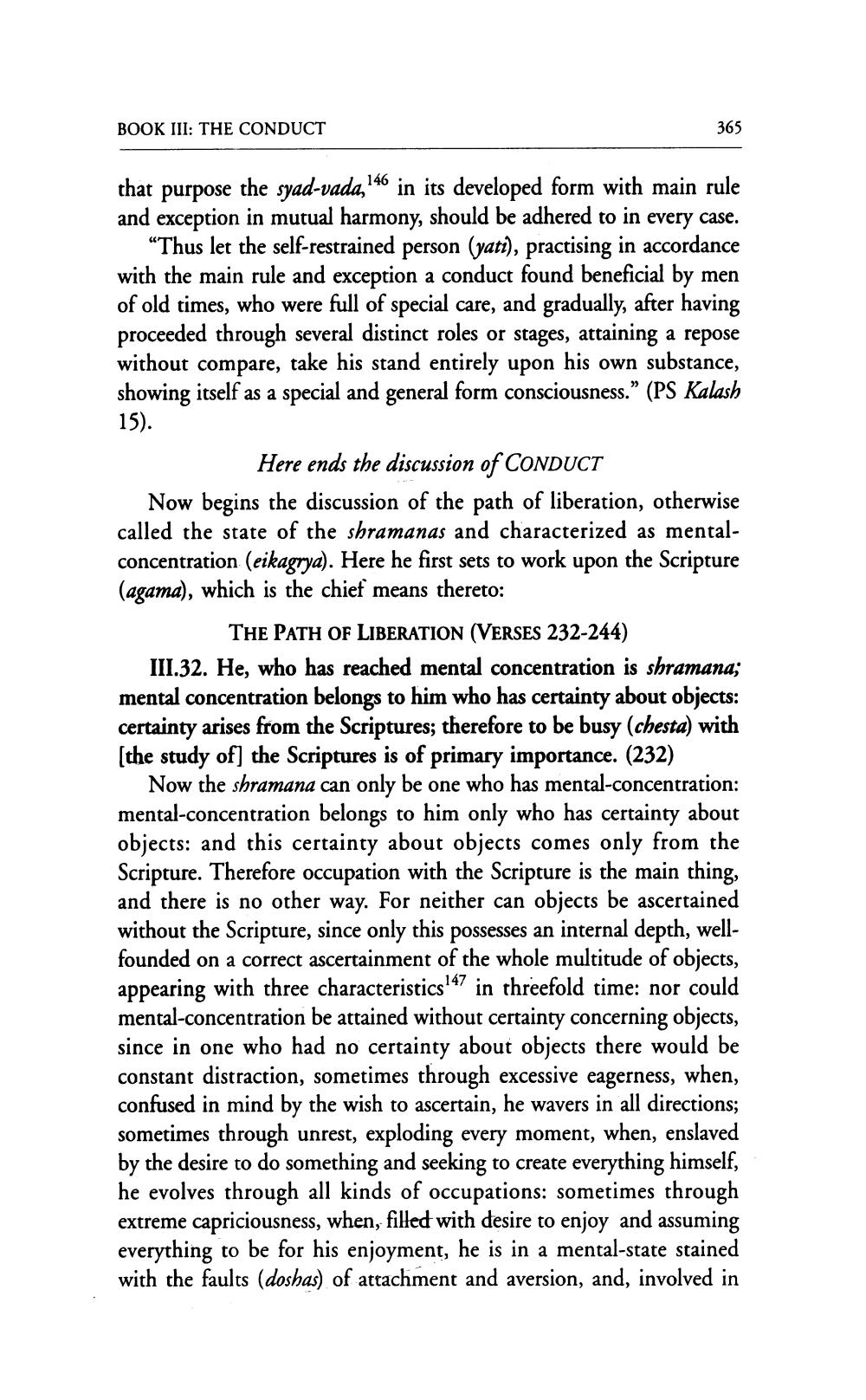________________
BOOK III: THE CONDUCT
365
that purpose the syad-vada, 146 in its developed form with main rule and exception in mutual harmony, should be adhered to in every case.
“Thus let the self-restrained person (yati), practising in accordance with the main rule and exception a conduct found beneficial by men of old times, who were full of special care, and gradually, after having proceeded through several distinct roles or stages, attaining a repose without compare, take his stand entirely upon his own substance, showing itself as a special and general form consciousness.” (PS Kalash 15).
Here ends the discussion of CONDUCT Now begins the discussion of the path of liberation, otherwise called the state of the shramanas and characterized as mentalconcentration (eikagrya). Here he first sets to work upon the Scripture (agama), which is the chief means thereto:
THE PATH OF LIBERATION (VERSES 232-244) III.32. He, who has reached mental concentration is shramana; mental concentration belongs to him who has certainty about objects: certainty arises from the Scriptures; therefore to be busy (chesta) with (the study of] the Scriptures is of primary importance. (232)
Now the shramana can only be one who has mental-concentration: mental-concentration belongs to him only who has certainty about objects: and this certainty about objects comes only from the Scripture. Therefore occupation with the Scripture is the main thing, and there is no other way. For neither can objects be ascertained without the Scripture, since only this possesses an internal depth, wellfounded on a correct ascertainment of the whole multitude of objects, appearing with three characteristics147 in threefold time: nor could mental-concentration be attained without certainty concerning objects, since in one who had no certainty about objects there would be constant distraction, sometimes through excessive eagerness, when, confused in mind by the wish to ascertain, he wavers in all directions; sometimes through unrest, exploding every moment, when, enslaved by the desire to do something and seeking to create everything himself, he evolves through all kinds of occupations: sometimes through extreme capriciousness, when, filled with desire to enjoy and assuming everything to be for his enjoyment, he is in a mental-state stained with the faults (doshas) of attachment and aversion, and, involved in




